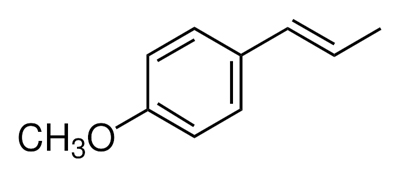Anethole
17 Jul
Most people who know me are well aware that I’m a pretty huge dork. In this post I’ll be delving into one of my favorite dorky pursuits and breaking you all off a little bit of flavor science. Many of you who were along for the ride in France may have heard me rambling about this subject, but it’s time to learn a little bit about Anethole.
Anethole is a common aromatic compound. Easily identifiable, this chemical is responsible for the distinctive taste of star anise and black liquorice. Despite being responsible for a rather polemical flavor, it has some really interesting flavor enhancing properties that are rooted the very evolution of our taste buds. Let’s take a moment to consider the evolution of our palate.
Humans are omnivores, and that means that we have an awful lot of options for food. While early humans were evolving, this became a bit of a problem. It’s hard to tell apart foods that are poisonous from ones that are perfectly safe. To help us in this pursuit, we gained some very sophisticated hardware for telling apart different tastes and aromas. On the opposite end of the spectrum, some foods were extremely calorie rich and nutritious. When we encountered those foods it was in the best interest of our brains to remember everything about them: what they tasted like, smelled like, and where we could find them. Our brains rewarded us for finding foods that provided us with basic needs. One of these needs was salt. Another was sugar.
There’s only one thing that tastes salty, and that’s NaCl, or salt. Because we need salt for our bodies to function, it was extremely important for us to find it in our diet. So much so that we evolved one specific type of taste bud just to perceive that one flavor. Our biological hard-wiring for salt doesn’t end there. Our brain uses salt as a signal that we’ve found a useful food source. It reacts by paying extra close attention to anything else going on on the tongue. In this way, salt amplifies the flavors of whatever else we’re consuming at the time. This is why seasoning is so important to the culinary world. We’re literally making food taste more like itself when we add salt. Just ask anyone who shared the dinner table with me in France. So it turns out the French don’t like to season their food very well, but that’s another article.
Just like salt, sugar does the same thing. When we taste something sweet all other flavors are amplified as well. Unlike salt, there are several things in nature that are sweet. Sucrose, Fructose, Glucose, Dextrose, Maltose, and Lactose are the most common forms of sugar we encounter in food. There are also things other than sugar that taste sweet. Our bodies are programmed with Sucrose, or common table sugar, as a benchmark for sweetness. If something is sweeter than sugar people generally find that thing to taste unpleasant and overwhelming. This is where anethole comes in.
Anethole is about 13 times sweeter than table sugar. Scientists aren’t exactly sure why, but most people don’t find the sweetness of it to be unpleasant. Because of this weird fluke of nature anethole has strong properties as a flavor enhancer. Even a very small amount of it can be used to make other flavors more pronounced.
The flavor of Anethole pairs well with Cinnamon, Clove, Nutmeg, Citrus oils, Chocolate, Cumin, Elderflower, Jasmine, Rosemary, Thyme, Black Currant, and many other flavors. Products on our bars that contain Anethole include Aquavit, Pastis, Sambuca, Peychaud’s bitters, and of course Absinthe. Remember that when combining these ingredients not only are you putting together flavors that work well together, you’re also quite literally amplifying the perception of all the flavors involved.


One Response to “Anethole”